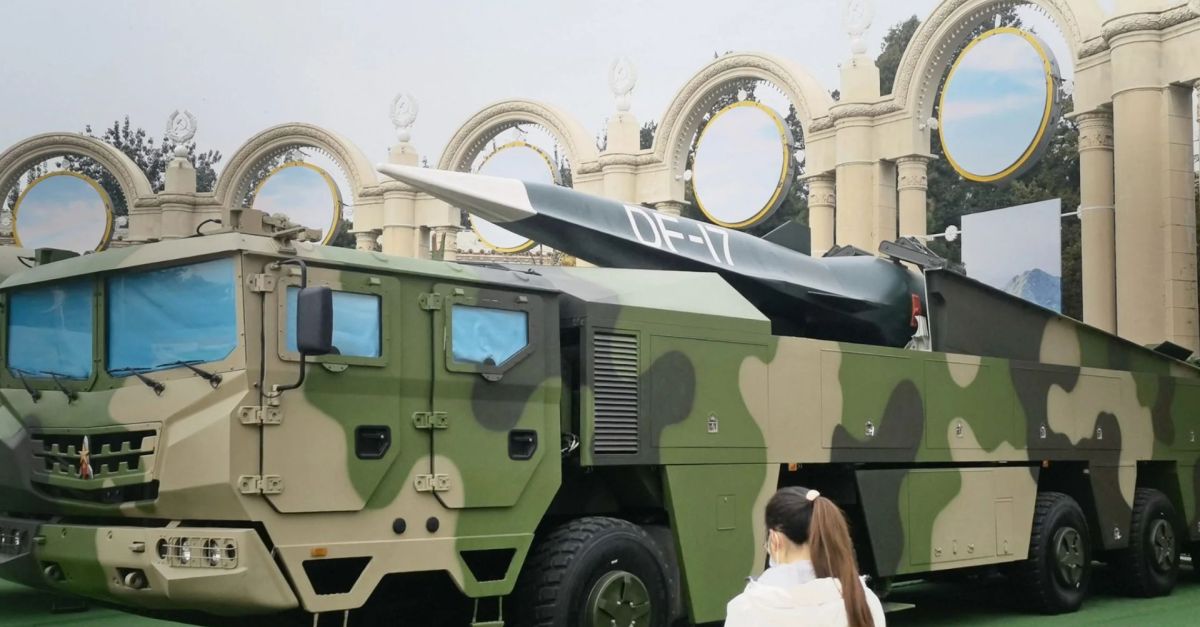Breaking News
Chinese reports suggests Hypersonic missiles can be made from steel reach Mach 8 speed.
Chinese scientists claim to have discovered a way to use steel, instead of the heavy and expensive tungsten, in the nose cones of hypersonic missiles. Once considered nearly impossible to achieve, Chinese scientists say they have succeeded thanks to a new thermal protection technology.
Follow Army Recognition on Google News at this link

DF-17 mounted on eretor launcher presented during Chinese parade (Picture source: Wikimedia)
According to a report by the South China Morning Post (SCMP), the scientists presented the design of a hypersonic anti-ship missile in a peer-reviewed article published in the Chinese journal Acta Armamentarii. According to the SCMP report, the team of scientists is led by Huang Fenglei, a professor at the Beijing Institute of Technology. If the use of a steel nose cone in the missile is realized, it could significantly reduce the cost of hypersonic missiles.
According to the SCMP report, the design presented by the researchers shows that the hypersonic missile can be made using commonly available high-strength stainless steel. The scientists claim that the hypersonic missile they designed with a steel nose cone can easily reach speeds of Mach 8 (about 9,800 km/h).
One of the main issues related to the use of steel in hypersonic missiles is its melting point of 1,200 degrees Celsius. This point is lower than the 2,500 degrees Celsius temperature a hypersonic missile can reach during flight due to its high speed and atmospheric conditions. This figure is based on tests conducted at Mach 5, so it can be estimated that the temperature will be significantly higher at Mach 8 as mentioned.
As a result, although highly desirable, countries around the world have been unable to replace tungsten with steel in hypersonic weapons. Tungsten alloys are generally used by other countries for their hypersonic weapons because they have a melting point above 1,600°C. However, tungsten is a rare metal, and most of its production is controlled by Chinese companies. To replace tungsten with steel, advanced thermal protection is needed, which Chinese scientists claim to have achieved.
According to the scientists' report, the missile will rise above the atmosphere after launch and then descend to an altitude of 18 to 12 miles before hitting the target. They estimate that the temperature inside the warhead could reach 3,000 degrees Fahrenheit after 18 seconds, which would be enough to ignite the missile's explosive agent.
The steel nose cone will be equipped with an additional thermal protection layer that will help it retain its shape before impact. The scientists propose using ultra-high-temperature ceramics as the top layer of the barrier, with an underlying layer of aerogel acting as thermal insulation to keep the explosive's temperature stable.
Hypersonic weapons are currently a hot topic, with several countries racing to develop low-cost versions. Replacing tungsten with steel would enable the production of low-cost missiles that can be mass-produced and easily used. China already has several hypersonic missiles in its arsenal, alongside Russia, which has also used them in the ongoing war against Ukraine.
The United States is also working to acquire a hypersonic missile, but their projects have not yielded the expected results. In the West, France has made significant progress in developing a hypersonic vehicle, with the successful test of the Vmax in 2023. China is believed to be well ahead of other countries in the race to develop hypersonic weapons, and it plans to mass-produce them for wartime use. Beijing is also striving to develop them at low cost, which other countries have been unable to achieve, according to available information. Last month, scientists at the College of Aerospace Science and Engineering of the National University of Defense Technology in Changsha, China, claimed to have developed a new cooling device for hypersonic weapons, which could extend flight time by nearly two and a half hours, according to their claims, complementing the steel nose cone technology.


























